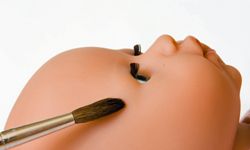Any serious collector wants his or her prized collection to be in tip-top shape. But when you're dealing with items that are well over 50 years old, you're bound to have to work around some of the inevitable issues that come with aging. And that rings true for composition dolls, made of a unique blend of wood, wax and lacquer that require the proper care to make them last.
Composition dolls came about in the early 20th century, when American manufacturers wanted to offer a stronger alternative to the fragile dolls made with bisque and china by the Germans. Early composition dolls were made of glue and wax and then manufacturers starting adding wood to their secret recipes. They were sealed with a hard lacquer and then their features were painted on. So, while these dolls were made to last, their condition often depends on how they've been stored and displayed through the years. Here are five tips for cleaning composition dolls to bring their beauty back to life.
Advertisement


